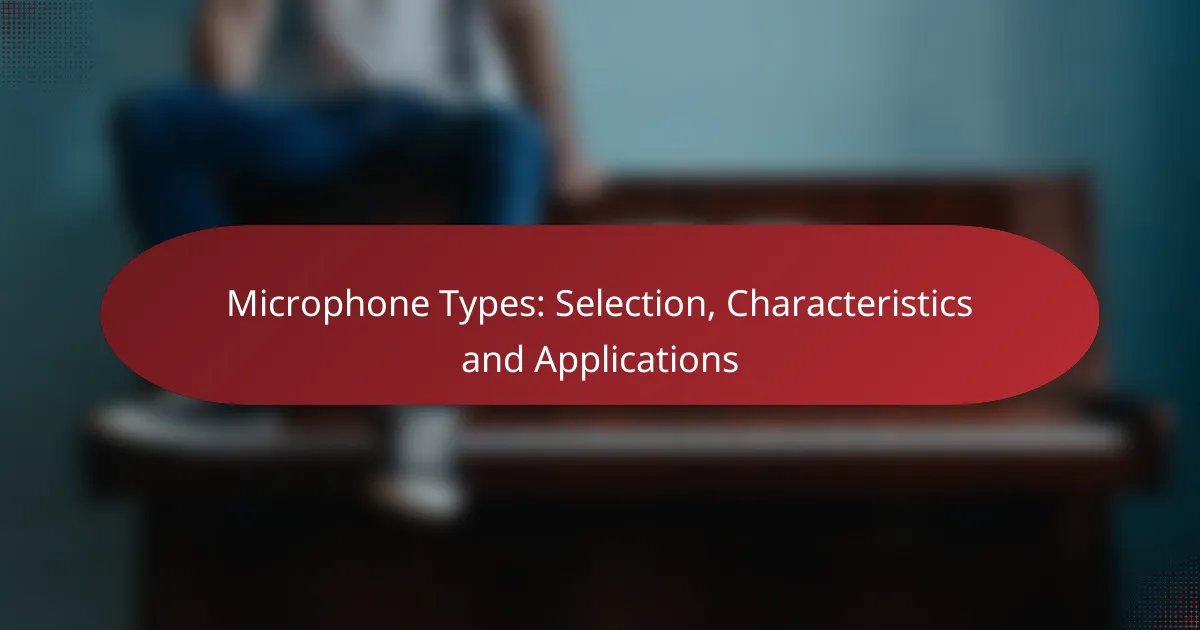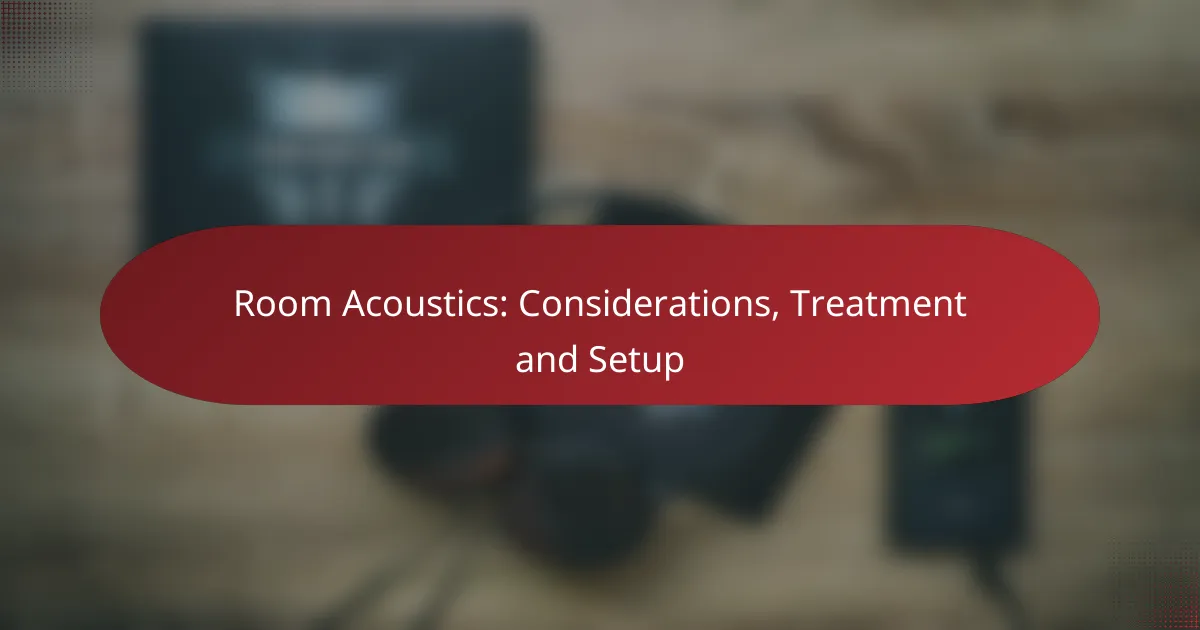Electronic music recording encompasses a variety of techniques and tools designed to enhance creativity and sound quality. Key methods include sound layering, effective MIDI usage, and meticulous mixing and mastering. Essential tools such as Digital Audio Workstations (DAWs), synthesizers, and plugins are crucial for producing polished tracks that resonate with listeners.
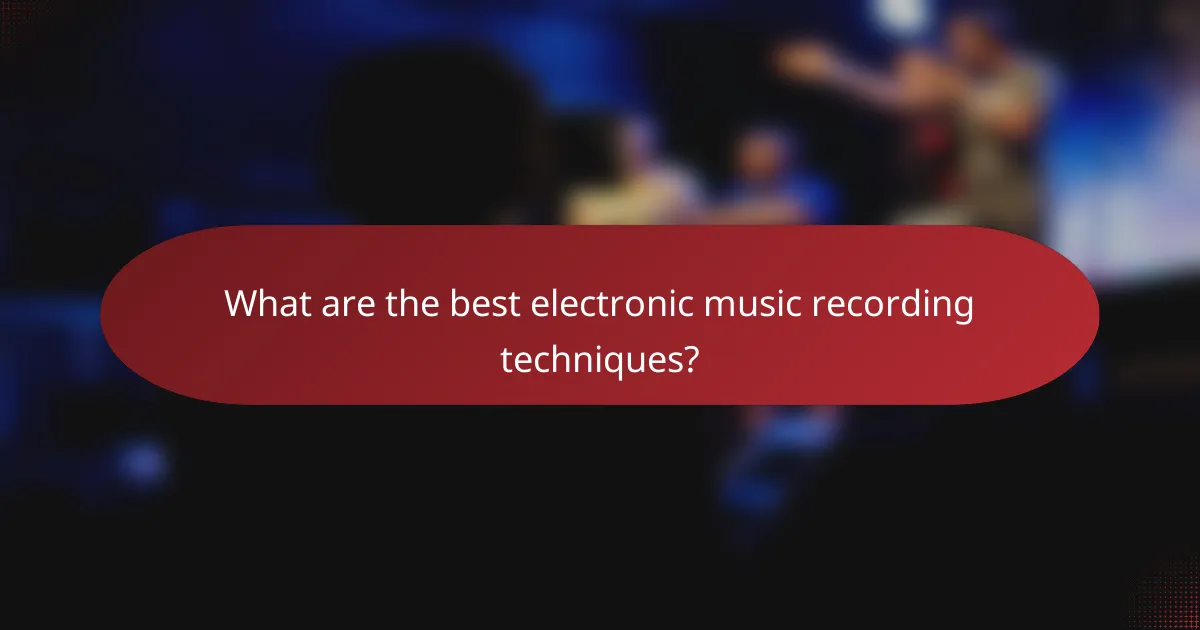
What are the best electronic music recording techniques?
The best electronic music recording techniques focus on maximizing creativity and sound quality. Key methods include layering sounds, using MIDI effectively, sampling and sound design, and mixing and mastering to achieve a polished final product.
Layering sounds
Layering sounds involves combining multiple audio tracks to create a richer and more complex sonic texture. This technique can enhance depth and fullness in your music. Start by selecting complementary sounds, such as a bassline paired with synth pads or vocal harmonies.
When layering, consider the frequency spectrum to avoid muddiness. Use EQ to carve out space for each sound, ensuring clarity and balance. A common approach is to layer one main sound with two or three supporting sounds to maintain focus while adding depth.
Using MIDI effectively
MIDI (Musical Instrument Digital Interface) allows for precise control over electronic instruments and software. Effective use of MIDI can enhance your workflow by enabling easy editing, quantization, and automation. Utilize MIDI to program drums, synths, and other instruments with accuracy.
Experiment with MIDI effects like arpeggiators and chord generators to create interesting patterns and variations. Remember to adjust velocities and timing to add a human touch, making your compositions feel more dynamic and less robotic.
Sampling and sound design
Sampling involves taking snippets of existing audio and manipulating them to create new sounds. This technique is essential in electronic music, allowing for unique textures and rhythms. Use high-quality samples and consider the legal implications of using copyrighted material.
Sound design focuses on creating original sounds using synthesizers and effects. Experiment with oscillators, filters, and modulation to develop distinctive tones. A good practice is to keep a library of your own samples and sound patches for future projects.
Mixing and mastering
Mixing is the process of balancing individual tracks to create a cohesive sound. Pay attention to levels, panning, and effects to ensure clarity and impact. Use reference tracks to guide your mixing decisions and maintain a professional sound.
Mastering is the final step in music production, enhancing the overall sound and preparing it for distribution. Focus on achieving a consistent loudness level and frequency balance across all playback systems. Common tools include limiters, compressors, and equalizers to polish your final mix.
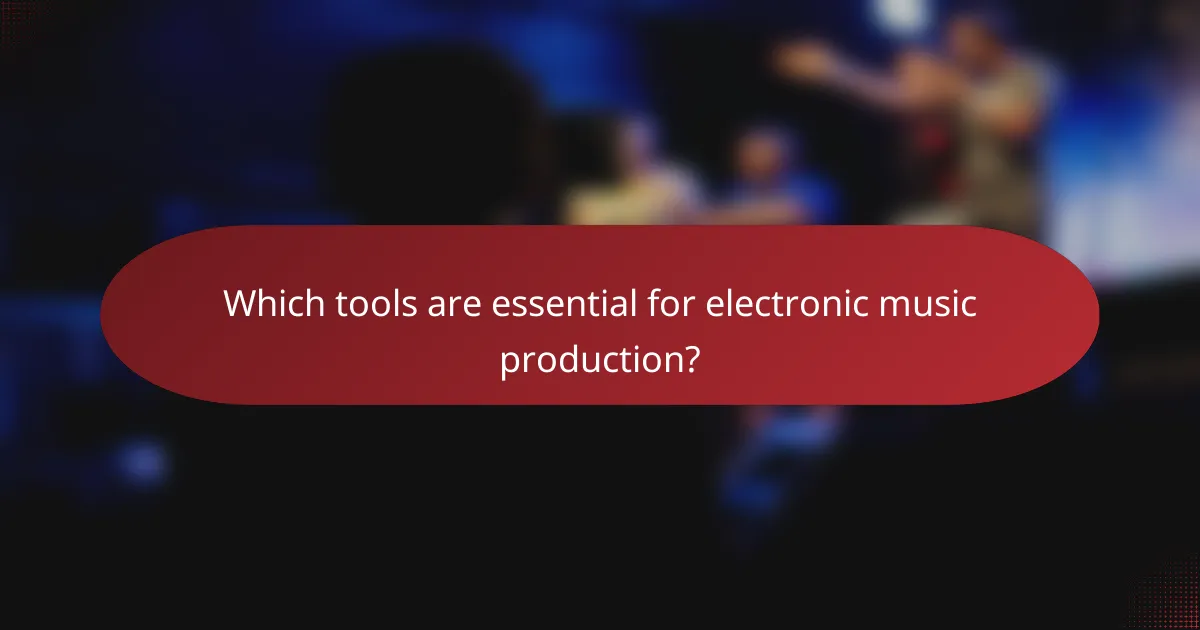
Which tools are essential for electronic music production?
Essential tools for electronic music production include Digital Audio Workstations (DAWs), audio interfaces, synthesizers, drum machines, and plugins. Each of these components plays a critical role in creating, recording, and mixing electronic music effectively.
Digital Audio Workstations (DAWs)
A Digital Audio Workstation (DAW) is software that allows musicians to record, edit, and produce audio files. Popular DAWs include Ableton Live, FL Studio, and Logic Pro, each offering unique features tailored for electronic music production.
When choosing a DAW, consider factors like user interface, available plugins, and compatibility with your operating system. Many DAWs offer trial versions, so testing a few can help you find the best fit for your workflow.
Audio interfaces
An audio interface is crucial for connecting instruments and microphones to your computer, converting analog signals into digital data. Look for interfaces with low latency and multiple input/output options to accommodate various recording setups.
Common brands include Focusrite, PreSonus, and Native Instruments, with prices typically ranging from around $100 to several hundred dollars. Ensure that the interface you choose is compatible with your DAW for seamless integration.
Synthesizers and drum machines
Synthesizers and drum machines are essential for creating unique sounds and beats in electronic music. Hardware synthesizers, such as the Moog Sub 37 or Korg Minilogue, provide hands-on control, while software synthesizers like Serum or Massive offer extensive sound design capabilities.
When selecting a synthesizer or drum machine, consider whether you prefer hardware or software, your budget, and the specific sounds you want to achieve. Many producers find a combination of both to be beneficial for their productions.
Plugins and virtual instruments
Plugins and virtual instruments expand the sound palette available in your DAW, allowing for more creative possibilities. They can range from effects like reverb and compression to virtual instruments that emulate real instruments or create entirely new sounds.
Popular plugin formats include VST, AU, and AAX, with well-known developers like Waves, FabFilter, and Native Instruments. Investing in a few high-quality plugins can significantly enhance your production quality, so prioritize those that align with your musical style.
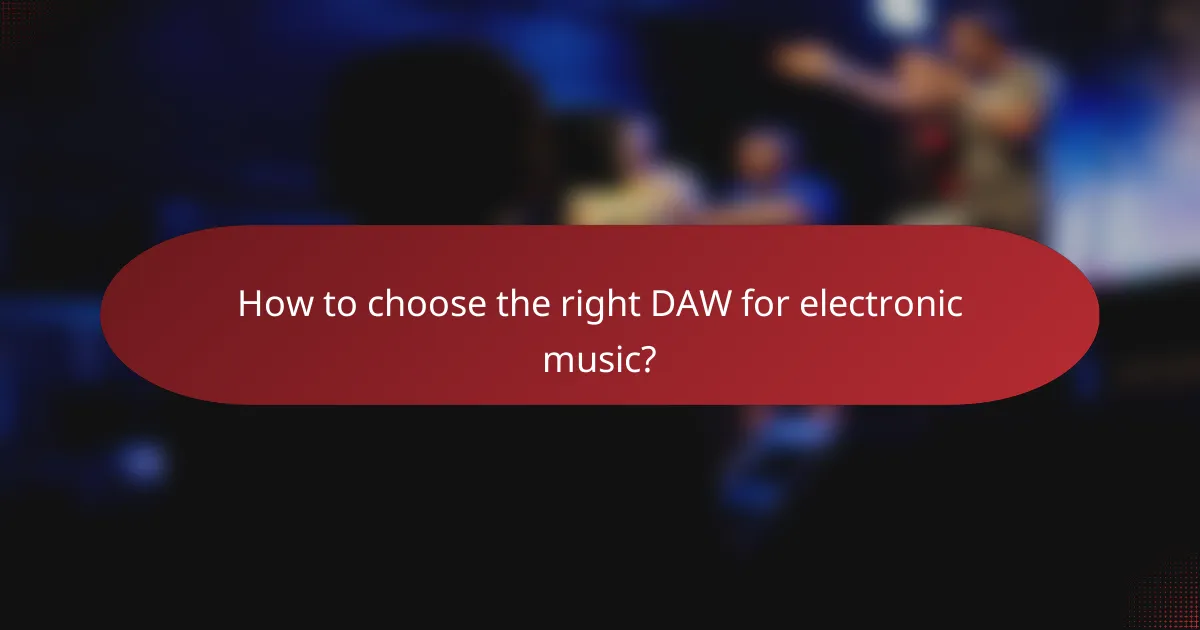
How to choose the right DAW for electronic music?
Selecting the right Digital Audio Workstation (DAW) for electronic music involves considering your workflow, genre preferences, and budget. A DAW serves as the central hub for composing, recording, and producing music, so it’s essential to choose one that aligns with your creative process.
Popular DAWs for electronic music
Some of the most popular DAWs among electronic music producers include Ableton Live, FL Studio, and Logic Pro. Ableton Live is favored for its intuitive interface and powerful live performance capabilities, while FL Studio is known for its user-friendly layout and extensive plugin support. Logic Pro, available only on macOS, offers a comprehensive suite of tools ideal for music production.
Other noteworthy options are Cubase and Bitwig Studio, each offering unique features that cater to different production styles. Cubase is recognized for its MIDI capabilities, while Bitwig Studio provides a modular environment that encourages experimentation.
Key features to consider
When choosing a DAW, consider features such as MIDI support, audio editing capabilities, and built-in instruments. MIDI functionality is crucial for electronic music, allowing for intricate compositions and control over virtual instruments. Look for DAWs that offer a variety of synths and samplers to enhance your sound palette.
Another important aspect is the user interface. A clean, intuitive layout can significantly improve your workflow, making it easier to focus on creativity rather than technicalities. Additionally, check for compatibility with third-party plugins, as this can expand your production options.
Budget-friendly options
If you’re looking for budget-friendly DAWs, consider options like Reaper and Cakewalk by BandLab. Reaper offers a full-featured trial and a flexible pricing model, making it accessible for beginners and professionals alike. Cakewalk is completely free and provides a robust set of tools for music production, ideal for those starting out.
Other affordable alternatives include GarageBand for macOS users and FL Studio’s entry-level versions. These options provide essential features without the high price tag, allowing you to explore electronic music production without a significant financial commitment.

What are the common challenges in electronic music recording?
Common challenges in electronic music recording include managing sound quality, overcoming creative blocks, and balancing technical skills. Each of these aspects can significantly impact the final product, requiring attention and strategic approaches to ensure a polished sound.
Managing sound quality
Sound quality is crucial in electronic music recording, as it directly affects the listener’s experience. To achieve high sound quality, consider using high-quality audio interfaces, microphones, and monitors. Regularly calibrating your equipment and maintaining a suitable recording environment can also enhance the overall sound.
Pay attention to factors such as room acoustics and background noise, which can degrade sound quality. Using soundproofing materials or recording in a quiet space can help mitigate these issues. Additionally, applying proper mixing techniques, such as EQ and compression, can further refine the audio output.
Overcoming creative blocks
Creative blocks are a common hurdle in electronic music production, often stemming from pressure or lack of inspiration. To overcome these blocks, try changing your environment, experimenting with new sounds, or collaborating with other artists. Taking breaks can also provide fresh perspectives and ideas.
Utilizing tools like sample packs or virtual instruments can spark creativity by introducing new elements into your work. Setting small, achievable goals can help maintain momentum and reduce the feeling of being overwhelmed, allowing for a more fluid creative process.
Balancing technical skills
Balancing technical skills is essential for successful electronic music recording, as both creativity and technical proficiency play significant roles. Familiarizing yourself with digital audio workstations (DAWs) and various plugins can enhance your production capabilities. Regular practice and tutorials can help improve your technical skills over time.
However, it’s important not to let technical challenges stifle creativity. Focus on mastering a few key tools rather than overwhelming yourself with every available option. Establishing a workflow that integrates both creative and technical aspects will lead to more efficient and enjoyable music production.
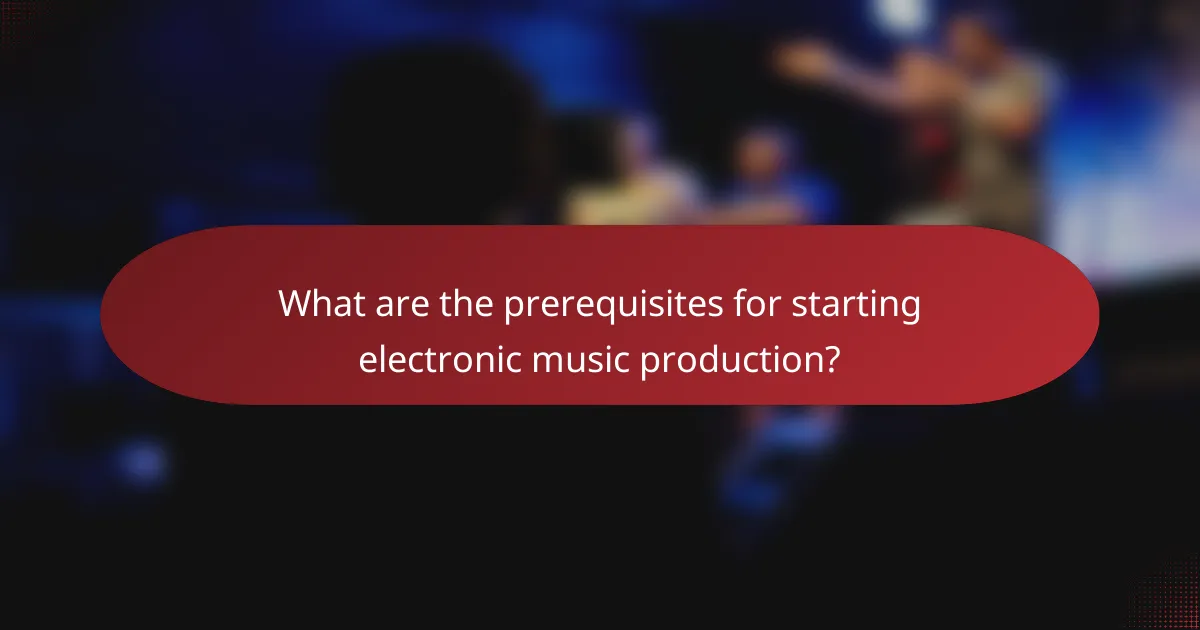
What are the prerequisites for starting electronic music production?
To begin electronic music production, you need a foundational understanding of music theory, audio concepts, and the software tools used in the industry. These prerequisites will help you create, manipulate, and produce music effectively.
Basic music theory knowledge
Having a grasp of basic music theory is essential for electronic music production. Understanding concepts such as scales, chords, and rhythm will enable you to create melodies and harmonies that resonate with listeners.
Familiarize yourself with the structure of common musical forms, like verse-chorus or AABA. This knowledge will help you craft engaging compositions that maintain listener interest.
Understanding audio concepts
A solid understanding of audio concepts is crucial for effective production. This includes knowledge of sound waves, frequency ranges, and dynamics, which will inform how you mix and master your tracks.
Learn about concepts like equalization (EQ), compression, and reverb, as these tools are vital for shaping your sound. Experiment with different settings to see how they affect your audio output.
Familiarity with software tools
Proficiency with digital audio workstations (DAWs) and other software tools is a must for electronic music production. Popular DAWs include Ableton Live, FL Studio, and Logic Pro, each offering unique features and workflows.
Take time to explore the interface and capabilities of your chosen software. Utilize online tutorials and resources to enhance your skills and streamline your production process.








